Marcia Thornton Jones's Blog, page 60
September 14, 2021
Re-Union with the Basics!
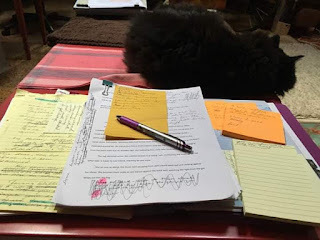
As you may remember, I teach for the MFA Program at SNHU, working primarily with students who are finishing their creative thesis projects. Over the years, I have gathered quite a collection of articles and handouts that target some basic writing concepts that are often overlooked in workshops. This past year, I’ve enjoyed getting back to these basics, finetuning my “writing space.”
You might be interested in a few of these:
Narrative Structure
Backstory and Exposition: 4 Key Tactics. Susan DeFreitas, contributing writer at Jane Friedman’s blog, explores effective strategies in insering backstory into your narrative, explaining, “Landing your novel opening can be tricky. On the one hand, you need to get the reader sucked into the present moment of the story as it’s unfolding; on the other hand, there’s a lot you need to explain about the past, which is precisely the sort of thing that puts readers to sleep…This info is generally known as backstory (essential information about the characters’ past) and exposition (essential information about the context of the story). Getting it right is one of the biggest challenges you’ll face with your novel.”
Story Structure: 7 Narrative Structures All Writers Should Know. As the writers on Reedsy blog offers, “While using a pre-existing blueprint might make you worry about ending up with a formulaic, predictable story, you can probably analyze most of your favorite books using various narrative structures that writers have been using for decades (if not centuries)!” This blog post explores seven distinct story structures that any writer can use to build a compelling narrative.
Narrate vs. Dramatize. Alex Donne’s excellent video explains the difference between narrating and dramatizing (show vs. tell), and how you can fix these issues during the revision. Revision is when the magic happens!Filter Words and Phrases to Avoid in Writing Fiction. Anne R. Allen created an excellent handout that provides a list of writing filters, with practical examples of how to replace them. As she states, “All words exist for a reason. Use them wisely to create engaging narrative.”
Purple Prose and the Word Surgeon’s Scalpel. Tom Bentley at Writer UnBoxed elaborates on how these filter words rob your narrative of its vigor. Bently offers excellent examples and explanations, reminding writers to “Keep in mind that when you clean up your writing, you’re not scrubbing it of the voice that makes it distinct and delightful. You’re clearing your throat so that voice sings out strong and true.”
(Related to Narrative Structure) Dialogue
How to Format Dialogue. Dax MacGregor offers nice illustrations on how to format dialogue, stating “Whether you are writing a short story, full novel or anything in between, the way you format dialogue is the same.”
The MasterClass in How to Format Dialogue in Your Short Story and Novel. The MasterClass staff put together this excellent handout, stating, “Whether you’re working on a novel or short story, writing dialogue can be a challenge. If you’re concerned about how to punctuate dialogue or how to format your quotation marks, fear not; the rules of dialogue in fiction and nonfiction can be mastered by following a few simple rules.
Active vs Passive Characters
How Can We Make Our Characters More Proactive? Jami Gold’s excellent handout details how a character needs agency in their story, stating “In other words, passive and reactive characters—those without agency—go with the flow, make no decisions, and don’t affect the story because they’re always one step behind. In contrast, proactive/active characters make the story what it is.”
On Passive Characters. Mary Cole of Good Story Company explains, “It's hard for readers to engage with a passive character, especially in the protagonist role.”
Five Ways to Tell If You Have A Passive Protagonist (And If You Do, How To Fix Them). Jimena I. Novaro’s excellent discussion offers a study into passive characters, comparing two beloved novels to illustrate her points, stating “ To illustrate these five places where you can identify a passive protagonist, I’m going to use two books that I love. They’re both good books, but one has the unfortunate flaw of having a passive protagonist, while the other has an awesome, active protagonist. The examples for a passive protagonist are from Harry Potter and the Goblet of Fire by J. K. Rowling; the examples for an active protagonist are from Sabriel by Garth Nix.”
Finding the Emotional Core. Related to creating active characters is taking advantage of a character’s emotional core. Jo Eberhardt on Writer UnBoxed explores strategies on how to create authentic characters that readers care about, stating, “Create a character who feels deep emotions, and invite the reader to join them on their journey. It creates a bond that can never be broken between your character and your reader — one that will still exist decades into the future.”
Plot Structures
On Pacing: Faster than the Speed of Thought. Donald Maass at Writers UnBoxed explains, “Plot pace is generally what people mean. Keep things moving. Get to the next event. Don’t meander around, cut to the chase. Get to the meat and quickly move on. It’s as if story is a double-speed march, or ought to be…As we know, however, story is not always about moving events along rapidly.”
Good Transitions: A Guide to Cementing Stories Together. Amanda Mascarelle illustrates the process of creating strong transitions that move the story forward, stating, “Most writers learned in elementary school that a good story requires a compelling beginning, middle, and end. But how does one make the pieces fit neatly together? From my tattered memory of grade school, my teachers skipped that part. Or maybe I was home with the chicken pox the day we learned about transitions—the words and phrases, often subtly deployed, that give stories shape and tug readers from idea to idea.”
Mastering Scene Transitions. Beth Hill of The Editor’s Blog discusses how to create effective scene transitions, explaining, “A scene transition takes characters and readers to a new location, a new time, or a new point of view. Transitions can also be used to show a character’s change in heart or frame of mind.”
(Related to Plot) Causal Chains
Why Your Story Needs a Causal Chain. Matthew Retino at The Writing Cooperative demonstrates how – and why – causal chains support the plot, stating, “…chains are fundamental to most forms of fiction…This is especially true if your story has a tragic structure. The sense of inevitability, of one event leading inexorably to another, increases the sense of drama and impending doom.”
What a Coincidence: 7 Clever Strategies for Harnessing Coincidences in Fiction. Steven James at Writers Digest University, offers advice on causality, offering strategies to avoid the dreaded coincidence, stating, “Well-timed coincidences can catapult a story forward, but a poorly planned one can bring your readers to a dead stop. Use these 7 strategies to harness the power of this storytelling tool while steering clear of common missteps.”
(Related to Plot) Chapter Building
How To Organize A Chapter.Nathan Bransford explores strategies to create chapters that move the plot forward, explaining “Too many writers treat their chapters like tanks of gas. They take off without really knowing where they’re going, drive around aimlessly until they run out of fuel, sputter to a stop, and then they start the next chapter after someone takes pity on them and tows them somewhere new.” Of particular interest, he offers a very nice discussion on creating cliffhangers that engage readers, stating , “The key to crafting a great cliffhanger is to construct the climax of a chapter so that its resolution opens up even bigger questions. Think about the fate of Dumbledore in the Harry Potter novels, Han Solo being frozen in carbonite in Star Wars, or “Who shot J.R.” on Dallas.”
How to Structure Chapters of Your Novel: 8 Tips for Writing Chapters. In this very interesting discussion, MasterClass explains eight strategies that help writers create reader-friendly chapters, explaining, “Chapters are the vessels of story structure, organizing the plot points of the larger work and allowing the reader to take a break and absorb what they’ve learned. A short story can be read in one sitting, but a novel is usually broken up into accessible parts, forming a book that can be easily revisited whenever the moment arises. Structuring chapters in a way that keeps readers immersed in the story is essential to novel-writing.”
-- Bobbi Miller
The Powers asked for a bio. I'm never good at these things, but I will try. Writer, middle grade fiction of various genres, featuring real kids with real emotions dealing with real world issues. Armed with an MA in Children's Literature (Simmons) and an MFA in Writing for Children and Young Adults (VCFA), I have worked with childhood heroes, including the indomitable Marion Zimmer Bradley (my first editor) and the genius that defines Gregory MacGuire, Eric Kimmel and Marion Dane Bauer (all advisors); was a contributing writer to Anita Silvey’s The Essential Guide to Children's Books and Their Creators; a contributing writer to American Dissidents: An Encyclopedia of Activists, Subversives ..., Volume 1.( Kathlyn Gay, editor. Books include Big River’s Daughter (Historical Fantasy. Holiday House, April 2013) Recommended by the International Reading Association, the Historical Novel Society, and was nominated for the Amelia Bloomer Project (American Library Association, 2013). The Girls of Gettysburg (Historical Fiction. Holiday House, Fall 2014), a Hot Pick on Children’s Book Council for September 2014, an honor for the 2015 Thomas Jefferson Cup Overfloweth and an honor for the 2015 Paterson Prize for Books for Young People. There's more, but too much of a good thing quickly turns sour.
Personal Narratives 101 by Jennifer Mitchell
As a teacher, adding childhood memories into my writing lessons is something that I focus on each fall. In our district we always start with a personal narrative unit, it seems to be an easy way for kids to ease into writing for the year-- who doesn’t love to share about a time in their life? I also think it is an important way to build relationships with students, it gives me an opportunity to have conversations with them about what they selected to write about. Even reserved students like to tell me about the memory they are writing about, and that builds trust. Writing at any age can feel overwhelming, but personal narratives seem to resonate with students, and they have a willingness to get their thoughts on paper.
As a bonus hopefully they see me as a real person not just a teacher-- someone who went on vacations, attended church camp, liked to water ski, and most importantly (the one they always love to hear about) me hitting my grandparents house with my mom’s car twenty-one days after I had gotten my driver’s license. If that story doesn’t make me a real person to my students I am not sure what will. : ) It is a great memory to be able to model feelings and details for students, because thirty years later I can still remember it very vividly.
Currently, I am using my summer vacation to Disneyland as my example for personal narrative writing. I have a student who also went on vacation there this summer. As I was modeling my writing for my class today I was able to draw on her as my expert to make sure my details were accurate.
Building connections and a writing community with memories is such a great place to get students thinking about their writing (and ready to put thoughts on paper)!
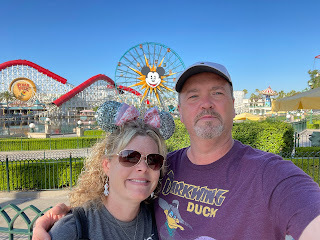
I am a teacher in the Kansas City area :)
September 12, 2021
Tapping our Inner Child For Writing by Darlene Beck Jacobson
This month's theme of mining our own childhood for ideas, settings, and characters in our stories really resonated with me. My latest MG novel WISHES, DARES, AND HOW TO STAND UP TO A BULLY began as a strong voice in my head. The main character, Jack, had a lot to say about one summer spent at his grandparents house. After writing a few poems of this novel-in-verse, it became apparent that I needed to decide the time period for his story. And, it needed to be at a time when kids were free to ride bikes, play, hang out together all day long without parents hovering nearby.
So, I chose 1964 which just happened to be the time when I was Jack's age. Filling out his story using the memories of my own childhood was a fun trip on the "way back" machine and added authenticity to the tale. We don't have to write historical fiction to use our own memories and events from childhood in our writing.
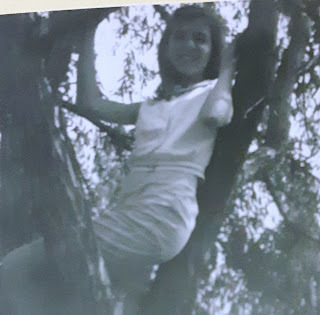
What are some ways we can tap into our childhood memories and use them in stories?
* Look through old photo albums and recall the feelings you had when the pictures were taken. I was feeling pretty satisfied having climbed to the highest crotch of our willow tree. What objects are in the background that might evoke feelings or memories that you can use with your current story. Who were you with? Are those people still in your life?
* Listen to music and songs that you enjoyed as a kid. Which songs made you dance and still give you that feeling today? Music has a special way of bringing us back to the time and place we heard the songs when they were new.
* What did you like about celebrations? What rituals did you and your family practice that you carried over into your adulthood? How would your character feel about these rituals?
* How did you feel about dressing up and choosing your own clothes to wear?
* What was your favorite hang-out spot? What was it about the place that made you want to keep going back? One of mine happened to be our local library...a tiny building filled with musty, dusty books that were portals to adventure beyond my small town imagination.
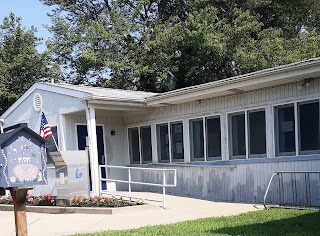
* Remember your favorite snacks or after-school treats? Are those foods still your favorite and are they popular today?
ALL these ideas help tap into our childhood. The feelings we remember associated with these events and memories are the same feelings kids have today. Use them to add depth and dimension to your modern-day stories. Being a kid transcends time and place.
Darlene Beck Jacobson still loves libraries, trees, and dressing up. The snacks she enjoyed during childhood still make an appearance now and then.

September 11, 2021
A Ball, A Wall, and Its impact
I was about 14 years old that day when we were swimming in my aunt and uncle’s backyard pool, just my brothers, my mother and me. Maybe a couple others. Doesn’t matter. What does is this.
[image error]Diameter-wise, it was about 24 inches of thick rubber, a stiff handhold jutting from the top; altogether sturdy enough for bigger kids to sit on and bounce. Not a mainstream pool toy. Nevertheless, and for whatever reason, this kangaroo ball was being hurled around, bouncing and skimming off the water's surface. Not by me, though. I was practicing flips into the deep end then leisurely swimming or treading.
Which is why I wasn't looking when the kangaroo ball propelled my skull against the concrete-and-tile pool wall. The impact had me somehow scrambling out of the water and over the edge where I lay on the deck, stars and flashing lights putting on quite a show
I hadn’t given this incident a thought for decades...until. Until a couple weeks ago when I added this line to my WIP: Since when have the entirety of my thoughts revolved around survival?
I needed the main character to give a response. And there it was, a flash of me in the pool, trying to keep from drowning.
Into the narrative it went.
Just that little snippet...
...because I rarely (maybe never?) center full scenes around specific childhood experiences. And yet, so many of them are there, their impact coloring the narrative, bringing a sense of realism to pure story.
Award-winning middle grade author of The Gollywhopper Games series and The Seventh Level, Jody Feldman may be taking a brief dip to the other (older) side with a YA thriller coming out next summer (the line above is from that book), but never fear. There’s MG in her heart.
September 9, 2021
Interview with Alda P. Dobbs, Author of The Barefoot Dreams of Petra Luna (+ Giveaway!)
I can't say how thrilled I am to be joined today by Alda P. Dobb's, whose truly beautiful new book The Barefoot Dreams of Petra Luna releases September 14.

Give us the elevator pitch—Barefoot Dreams in a sentence.
Twelve-year-old girl will stop at nothing to keep her family safe and make her dreams come true amidst the violence and chaos of the Mexican Revolution of 1913.
I love the description of a barefoot dream. Could you tell our readers about the significance of the title? Is this a phrase you heard as a child?
My grandmother was illiterate as a child and though she had many dreams, her main one was to learn to read and write. This dream, however, went against the traditions of her family and she often got in trouble for wishing to better herself. Her family believed the church when it stated that everyone had been assigned a certain lot in life from birth to death, to include a certain social status. She never believed this. I wanted to put this sentiment in the title. Also, as I combed through old photographs of impoverished families from that era, I noticed that the children were always barefoot. It struck me like a bolt of lightning that something as simple as shoes, which we take for granted, was a luxury to people back then. I combined both the bare feet from the photograph and my grandmother’s desire to learn to read, and the phrase “Barefoot Dreams” came to me.
I’m also so intrigued by the fact that this is a family story. Can you tell us more about that?
Sure. Growing up I loved listening to many family stories about my great-grandmother’s experiences during the Mexican Revolution. They all told of extraordinary events and unbelievable trials she endured as a child. One story in particular intrigued me. It was of my great-grandmother and her family anxiously waiting for the US border to open along with thousands of other people so that they could cross into safety. I decided to do some research to find out if it was true. Without having an exact date, I searched through old newspapers and after many months of research (and almost giving up!), I found an article that described the event exactly as my great-grandmother had recounted it. I knew then I had to share her story with everyone, and Petra Luna was born!
There’s such great descriptive writing throughout. One of my favorite phrases involves sweat beads that race down Petra’s back like lizards scrambling for shade. Do you enjoy descriptive writing? Does it come naturally? Any tips for becoming a better descriptive writer?
Thank you so much for your flattering words! I do love descriptive writing and I feel I still have a lot to learn. I enjoy observing nature a lot and since this story takes place in the outdoors, I was able to incorporate a lot of what I’ve seen and experienced (not to mention how much I LOVE catching lizards!). I’d say a good tip is to always be observant of your surroundings, whether outdoors, at an amusement park, a café, or at a funeral, always observe your surroundings with all your senses. How does the place smell? What do you hear? How are people talking? What are children doing? Practice making mental notes or write them down so that you can later refer to them.Did you incorporate any details handed down from your grandmother?
I was able to infuse many details and emotions into the scenes thanks to feelings of despair, helplessness, and triumph passed along with every story. In one of the scenes where a lady throws coins on the floor that are owed to Petra, I had to transport myself to the times I heard my grandmother describe this and weave in the emotion I sensed as she told the story. These emotions blended in the stories guided my writing and scene creation.What was the writing process like? Did having history—and a repeated family tale—help guide you, or did it almost bog you down? (Sometimes, you can almost know too much!)
That’s true! You’re absolutely right. Sometimes having too many family stories can feel overwhelming. For me, my family stories helped inspire characters, their actions, and their beliefs. They also served as a frame or a base into which I could mold scenes that helped carry the plot. The family tales also gave meaning to a lot of the photographs I came across in my research. The expressions on people’s faces, their clothes, their environments all transported me to a world I felt I already knew thanks to my family’s experiences.
How did you go about building the characters?
That’s a great question. I think I first imagine scenes. I see them as an open stage where characters are invited to step in. If they’re a “fit”, meaning they feel organic to the scene, I let them stay, if not, they’re out. Some of the characters were inspired by people I know or knew but most came from my imagination after reading narratives and interviews of people who lived through the Mexican Revolution. Many photographs from that era also inspired characters.
Where did the tiny diamond detail come from? I think it’s such a powerful symbol.
Aww, thank you! I was born in a region in northern Mexico called the La Region Carbonífera, or the coalmining region. My grandfather was a coalminer, and through him and the rest of the town’s people, I learned firsthand the pride everyone had in this precious black stone. I wanted to incorporate this feeling into the story since it takes place in that region. When I was a child, I was told diamonds came from coal that had been put under immense pressure, and even then, it made me wonder if the same applied to people. Luckily, I still had that thought when I wrote this book!
Why MG? Really, this story is somewhat ageless. As an adult, I still find Petra’s story riveting. I can imagine it being an adult story as well, one featuring a young protagonist. Why did you want to write in this age category specifically?
I’ve always had a special admiration for tweens. There are so many changes coming at them head-on as they stand on the verge of claiming independence while still being afraid to let go. I also admire the courage children exhibit during dire circumstances. By writing this story geared towards young readers, I want them to know that they too have the power and determination to be a leader like Petra. Sometimes we adults don’t give children enough credit yet they are capable of so much if we give them the space and confidence to grow and figure things out on their own. I also want young readers to have hope and realize that no matter the circumstances, they too can look up to their dreams for guidance and strength during dire times. But honestly, I also wrote this book with the intent to share a good story that would appeal to any age group. I wanted to give all readers a sense of the Mexican Revolution and its effects on the poor, the rich, and the foreigners.
Every project we tackle changes us—as writers, as people. What was the biggest impact writing this book had on you?
Wow, that’s an incredible question. For one, I feel I’m a lot closer to my ancestors. I feel I’m more grateful for all their sacrifices and more aware of the many hardships they endured to give me a life full of opportunities.
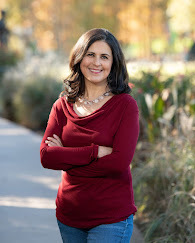
What’s next for you?
I’m working on Book 2 now! It’s still untitled but follows Petra Luna and her family to a refugee camp in Eagles Pass, Texas and then to San Antonio where 30,000 refugees settled during that time. I’m also working on the Spanish translation of Barefoot Dreams of Petra Luna and will soon record the Author’s Note for the audio book. I’m also kicking the idea of a picture book and a historical YA. Stay tuned!
Like to hear more? Check out this video of Alda talking about Barefoot Dreams. And be sure to visit her at
www.aldapdobbs.com
Click the link below to enter to win a signed copy of The Barefoot Dreams of Petra Luna (or a Petra Luna coffee mug):
Win a Copy of My Book!!
September 8, 2021
RECYCLING MY PAST -- by Jane Kelley
Like most people, I don't believe I'm getting older. And so it came as a horrible shock when I realized that my 1960s childhood would be historical fiction. In fact, even my daughter's childhood would be. On 9/11/01, she watched the World Trade Center collapse from the windows of her 2nd grade classroom in Brooklyn.
I haven't found a good way to incorporate those experiences into a novel, but I have been mining the emotions of my childhood in all my writing.
After my first novel Nature Girl was published, I often told people that I got the idea for the book from our family vacation in Vermont when our daughter was the age of Megan. I always made it clear that Sofia was not the model for that whining, nature-hating, self-pitying girl who didn't think she could do anything. I was.
When I was young, my family took a hike in the woods. I complained so much about everything that I was given the nickname "Whiny Grumpus." I don't recall who called me that. But I vividly remember the emotions. Feeling alienated from the rest of my family who cheerfully climbed hills. Feeling miserable that I couldn't keep up. Feeling powerless to change my situation. Feeling a brief satisfaction that my complaints got me the most precious commodity -- attention. Feeling sad that attention wasn't for anything good that I had done.
Kate Messner talks about finding your character's knot -- something she read about in Jeff Gerke's PLOT VERSUS CHARACTER. Ropes need to run smoothly in order to be useful. If your character has knots, then they won't be able to get on with their lives until they untangle them. She mentioned that writers often have their own knots. That sure resonated with me.
I'm not exactly writing fiction in lieu of therapy. I am, however, always on the lookout for sore spots that I can explore.
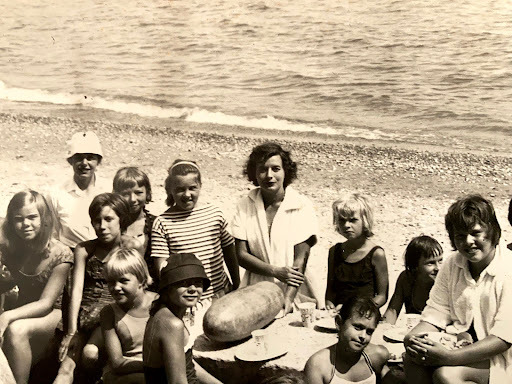 A beautiful day at the beach! So many friendly girls! Lovely Mom is going to cut open a delicious watermelon! What could be better? But let's zoom in on young Jane.
A beautiful day at the beach! So many friendly girls! Lovely Mom is going to cut open a delicious watermelon! What could be better? But let's zoom in on young Jane.

Oh yeah. That's the Jane I'm writing about.
Jane Kelley is the author of Nature Girl, The Girl Behind the Glass, and most recently The Escapades of Clint McCool. The hero of those chapter books is a young boy who wants super powers. He doesn't seem to have much in common with her––except his powerful need for attention.
September 7, 2021
Holly Schindler Interviews the Young Authors of A Call to Arms
Before the pandemic, the students in Ben Maisel's class at McAuliffe Elementary brought my book The Junction of Sunshine and Lucky to the stage. It was truly amazing stuff--the class adapted the book as a play, created folk art sculptures for the set, and allowed me to watch both productions online! It was a complete joy.
It was also a joy to hear from two of those students a while back, and hear that they were in the midst of writing and publishing their first book! A Call to Arms is available now; I'm delighted to interview the two authors (Arjun R. and Rowan S.) here at Smack Dab:
 Available on Amazon!
Available on Amazon!
Congrats on the release of your first book! In the publishing world, we talk about “elevator pitches”—super short descriptions of a book. Can you summarize A Call to Arms in a sentence or two?
A Call to Arms is a short, comedic, sci-fi adventure starring Commander Nougat and Barry Bluejeans, as they fight against the evil Blargs.
Tell us all about how this all got started. Whose idea was it? What made you want to write a book?
One day, after school ended, Arjun invented a game where we pretended to be in space fighting against imaginary enemies with our blasters. We decided to name the characters in the game Commander Nougat and Barry Bluejeans. We liked the idea of the game so much that Rowan said “Why don’t we write a story about this?”
We had tried writing together a few times before in school and we really enjoyed it, so we figured we would enjoy making this together. We never expected it to become a full-fledged book at that point, but here we are.
What was the writing process like? Did you ever hit a wall / get writer’s block? How did you push through it?
Well, the writing process was more than a little bumpy, and several times we got writers’ block, especially near the ending of the book. But eventually, we managed to wrap it up nicely, by using freewrites, mapping the story, and discussing different sequences of events. Because we are good friends, it made writing the story a lot more fun. We kept each other going, and without the other person, each of us alone might not have written or finished the story.
How’d you come up with the cover?
We didn’t. Our good friend, Lea, did. She read the draft, and decided to illustrate one of the scenes on the cover. Can you guess which scene it is?
What was the hardest part of writing and publishing?
Getting people to read, review and edit and then help us publish was probably the hardest part for us. This took us almost a whole year where we learned a lot and had to practice patience and persistence.
What was the easiest part?
The actual writing of the story was probably the easiest part. It kinda just flowed out. Sometimes we each worked on our own paragraphs, and edited the other person’s, which made things a bit easier, but mainly we worked together, and it was much easier and fun for both of us.
What was the most surprising part?
Probably the actual publishing. We didn't really ever expect to publish at all.While we were writing we talked about it, but we didn't take it seriously at the time.
Would you do it again? (Or, what are you working on now?)
We might. We ended the book in a way that could lead to another story, making a new series. At this point, we aren't entirely sure whether we should, and whether we’ll have enough time.
What advice would you give other aspiring writers?
Freewrites can help a lot with writer's block. When you freewrite you can write random bits of storyline for your book, and then if you come up with one that fits well, you can put it in the book.
Also, if you make a timeline of events, or a map of the story, it can really help you link everything together and be consistent. Procrastination was hard to overcome and it took us almost a year to finish the book, so hang in there and don’t give up!
~
That's some of the best advice on pushing through writer's block I've ever heard! That's so true about timelines / mapping.
Don't hesitate to grab a copy of A Call to Arms!
September 3, 2021
How to Mine Your Childhood for Story by Irene Latham
For some, this comes naturally, easily. We all know those people who move through life with joy and exuberance, as if they never left childhood in the first place.
For others, revisiting childhood means re-experiencing painful memories. Not everyone wants to go back to the middle school lunchroom! But facing the where-should-I-sit (and other questions) is exactly the kind of courageous mining that's required, if a writer is to create emotionally true stories that will resonate with an audience who actually visits a middle school lunchroom every day.

I faced some of these head-on in my book with Charles Waters, DICTIONARY FOR A BETTER WORLD: Poems, Quotes, and Anecdotes from A to Z . Each word we selected for our Dictionary includes a short memoir piece about our relationship and/or experience with the word on the spread. For instance, on the “Belonging” spread, I share about our family's mid-school-year move (4th grade) to yet another new town, and what happened when my mother offered to host a party for me to get to know my new classmates.
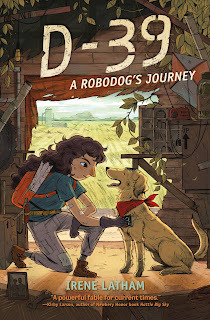
Other books like D-39: A ROBODOG'S JOURNEY feature elements of my childhood: a love of pets (and STAR WARS!), a parent's absence, relocation, and long days in nature.
Some of the writing I love best is 100% rooted in my actual childhood experiences.
And some of the writing I'm still not brave enough to put on the page is from my actual childhood, too. Working on it...
5 Ways for Children's Book Creators to Connect with the Child Inside
1. Remember 3 favorite foods from childhood. Buy or prepare them, and enjoy!
2. Go through some old family photos. Ask the child-you: What did I love best about this day? What was the worst?
3. Maybe you liked climbing trees or making forts or going to the skating rink. Revisit (or recreate) a special place from your childhood.
4. Ask other family members to share something they remember about you as a child.
5. Dive back into whatever was your childhood obsession. For instance, use the internet and locate a copy of the favorite book or toy or game, and experience it again as an adult. Or, if you were a horse lover, visit a barn, go to a dude ranch, go on a trail ride...or go to Churchill Downs and Kentucky Horse Park like I did earlier this summer. :)
 me watching a horse race
me watching a horse raceat Churchill Downs!
If you want more of this kind of exploration, try THE ARTIST'S WAY by Julia Cameron.--Irene Latham is a grateful creator of many novels, poetry collections, and picture books, including the coauthored Can I Touch Your Hair?: Poems of Race, Mistakes, and Friendship, which earned a Charlotte Huck Honor, and The Cat Man of Aleppo, which won a Caldecott Honor. Irene lives on a lake in rural Alabama.
September 2, 2021
Childhood Memories: Five Senses
Childhood Memories: Five Senses
As I was thinking about how I use childhood memories in my writing, it struck me that these memories involve all five senses—and that I should be sure to use every single one of these sensory impressions as I work.
My natural tendency is to write a lot of dialogue and then add some description along the way. As a result, much of the description tends to involve what the character is seeing (facial expressions on the person they’re talking to) or hearing (what that person is saying). Over the years, I’ve learned to expand beyond that and incorporate the other senses as well.
As we’re saying farewell to summer, I thought I’d use the example of a childhood memory at the pool.

Seeing: Everything getting blurry and double-visioned because I’d had my glasses off for too long.
Hearing: Kids shouting “Marco!” “Polo!” in the deep end. Bees buzzing around the trash cans near the soda machine.
Smelling: Chlorine. Sunscreen.
Tasting: The overly sweet orange drink from the machine.
Touching: The slap as you hit the water after jumping from the high diving board.
As I move forward with some new projects, I’m hoping to revisit more childhood memories in all their sensory glory.
--Deborah Kalb
@font-face {font-family:"Cambria Math"; panose-1:2 4 5 3 5 4 6 3 2 4; mso-font-charset:0; mso-generic-font-family:roman; mso-font-pitch:variable; mso-font-signature:3 0 0 0 1 0;}@font-face {font-family:Calibri; panose-1:2 15 5 2 2 2 4 3 2 4; mso-font-charset:0; mso-generic-font-family:swiss; mso-font-pitch:variable; mso-font-signature:-536859905 -1073732485 9 0 511 0;}p.MsoNormal, li.MsoNormal, div.MsoNormal {mso-style-unhide:no; mso-style-qformat:yes; mso-style-parent:""; margin:0in; mso-pagination:widow-orphan; font-size:16.0pt; font-family:"Times New Roman",serif; mso-fareast-font-family:Calibri; mso-fareast-theme-font:minor-latin;}.MsoChpDefault {mso-style-type:export-only; mso-default-props:yes; font-size:16.0pt; mso-ansi-font-size:16.0pt; mso-bidi-font-size:16.0pt; mso-fareast-font-family:Calibri; mso-fareast-theme-font:minor-latin;}div.WordSection1 {page:WordSection1;}
August 29, 2021
Dear 11-year-old Disaster....
By Charlotte Bennardo
Geez. Eleven is tough. And you know what? The next years are going to be even tougher. There will be bullies, a move to a strange town where you fit in less than where you are now, times when money is scarce, and too many days when you doubt yourself and withdraw. At eleven, you don't know where to turn, who to talk to, or what to do. Sometimes, it won't feel like it will get better.

Photo by Karyme França from Pexels
But hang in there, kid. You're stronger than you think. You have an inner fortitude you'll learn to trust. All that poetry you're writing now? Well yes, it's pretty bad, but you'll get better. You'll learn your craft. You WILL get books published. You'll have wonderful- and terrible experiences- which you will use in your writings. Don't be afraid to dream big or work hard. And even though you may think it, others are feeling the same way. So say hello to that strange kid who keeps to himself so when you meet up years later, he thanks you for your kindness. Don't take to heart the mean things the popular crowd says because they don't know you, and after graduation, they disappear. Take Russian history because the teacher, Big Daddy Clingon, is a cool hippie and he also teaches creative writing. Ignore the English teacher who trashes your writing because for some reason doesn't like you- you'll be a published writer, something she never achieves. Middle and high school won't be even a major part of your life, so you will survive and move on. You will find your way. It won't be perfect, but then not many things are. True perfection is found in never giving up your dreams.
See you in a few....
Char



